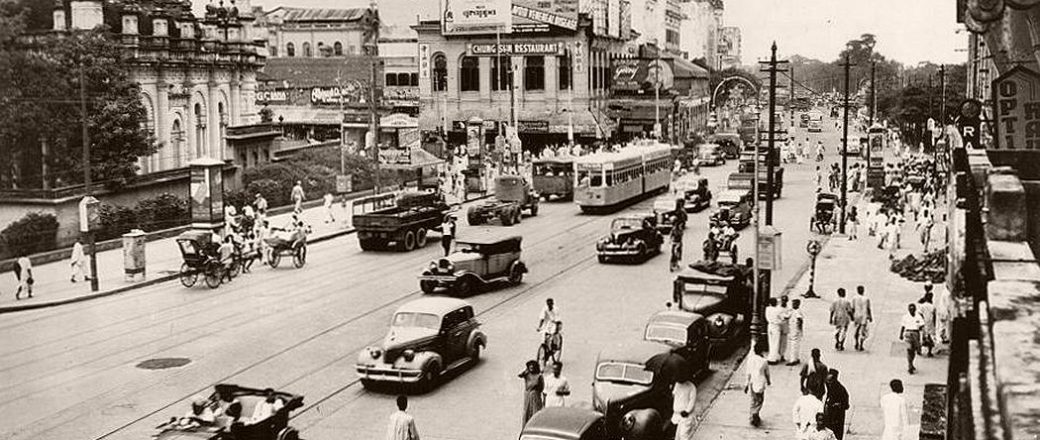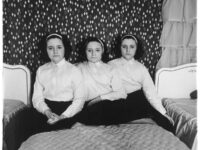Mr. Waddell was a military photographer. Many of his captions seems like annotations that would be found in a typical military magazine. The album begins with several general long shots of Calcutta and ends with a picture of dhobi-s (washermen) washing clothes. The text accompanying the last photograph also sounds as if the author intended to finish with that picture of one of the “great mysteries of India.”
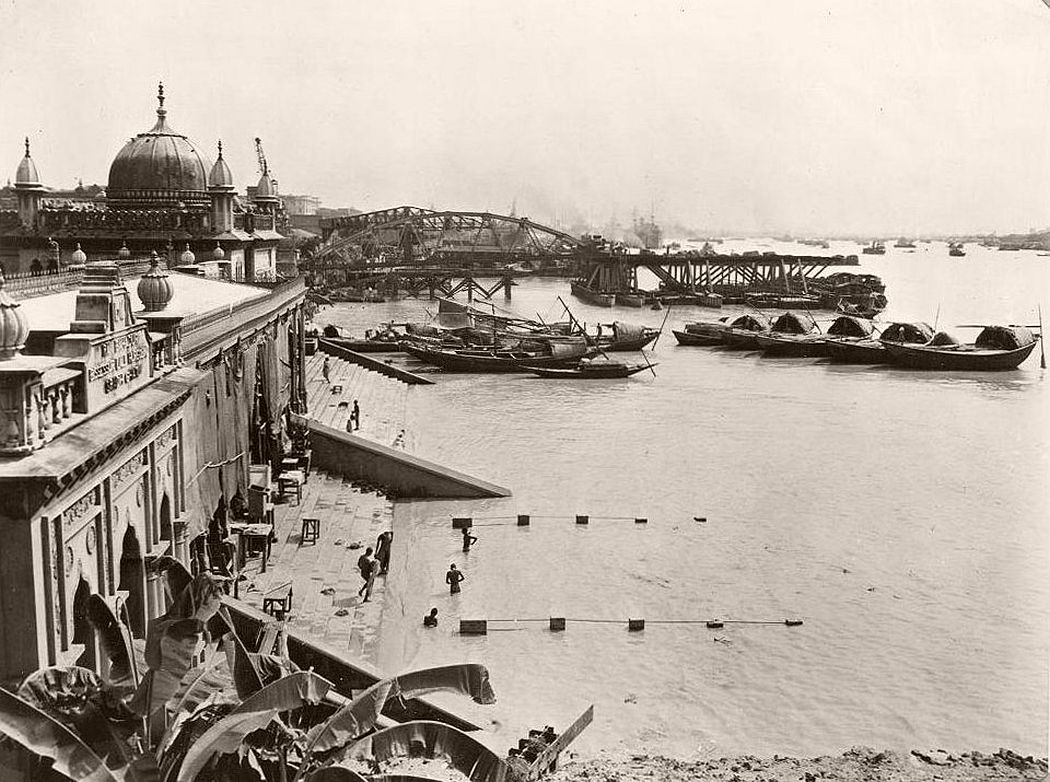
The Hooghly river is lined with bathing ghats likke the one shown here. The troop transports in the background seem out of place in the old-world atmosphere created by the temple at left and the sampans at anchor.
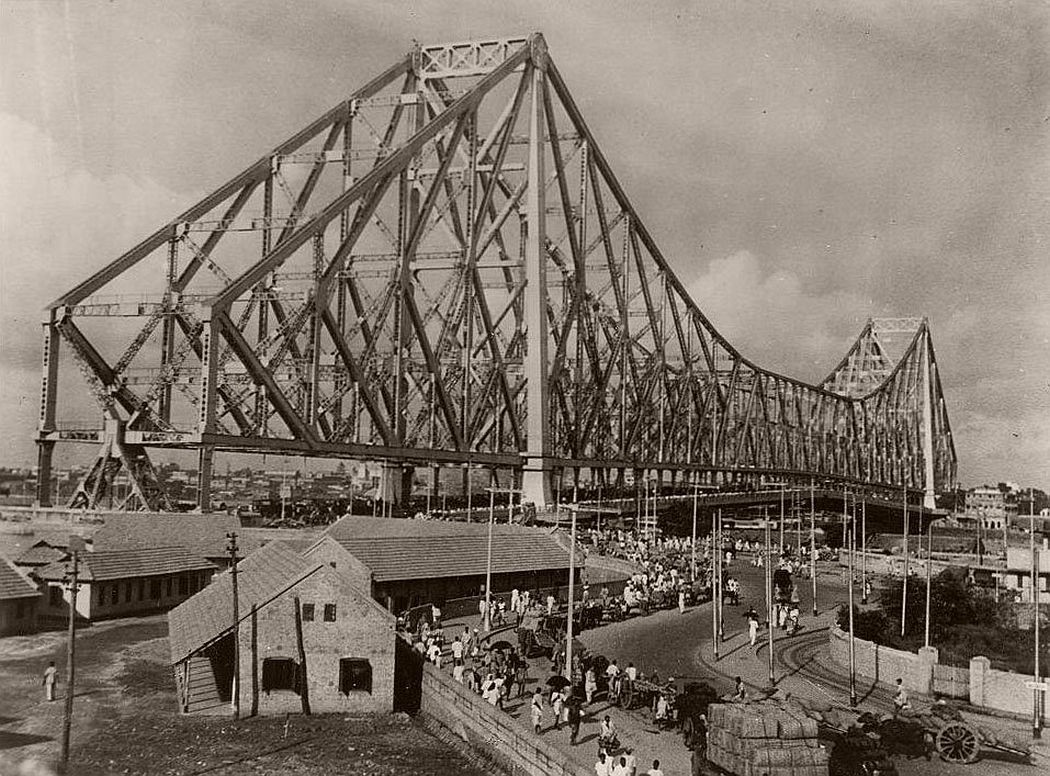
Calcutta boasts the third largest cantielver bridge in the world. Its real importance, however, lies in the fact that it serves as Calcutta’s gateway to the wese, being the city’s only bridge spanning the Hooghly.Taking 7 years to build, it cost $10,000,000. It towers 310 feet as the city’s highes structure, is 2,150 feet long with a center span of 1,500 feet. It was completed in 1942, opened in February, 1943.

The indifference of the passerby on this downtown Calcutta street to the plight of the dying woman in the foreground is considered common. During the famine of 1943, cases like this were to be seen in most every block, and though less frequent now, the hardened public reaction seems to have endured.
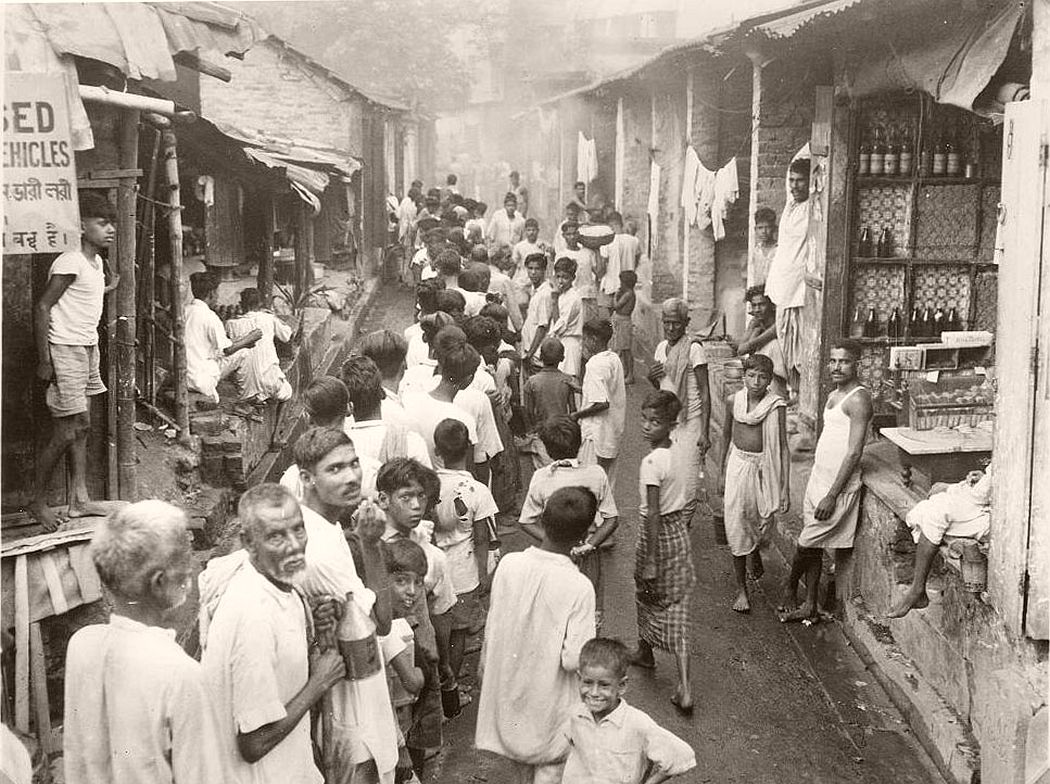
Calcutta’s poor from a line to buy keresene at 6 a.m. Each little cubicle may contain a shop and living quarters for a family ranging possibly from 6 to 12. Sanitary facilities consist of an open street drain.
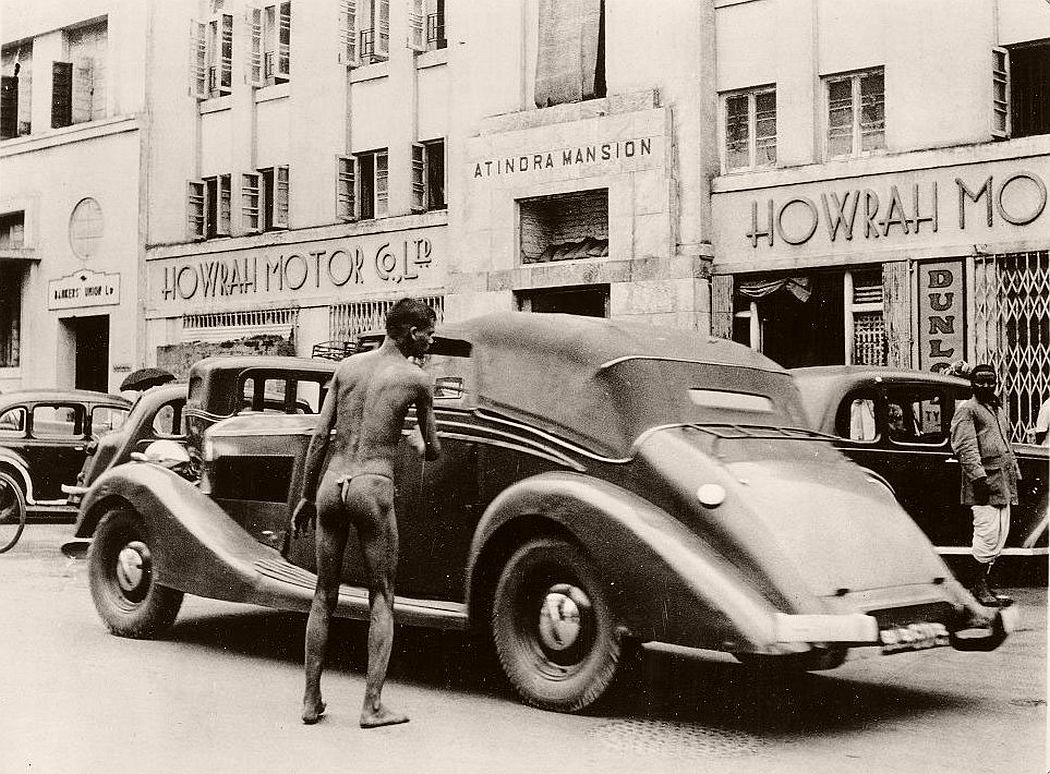
Native madman is allowed to roam the streets naked, accosting cars, sitting down in middle of the street or anything else that takes his fancy. How he escapes being run down or run in by the law is one of India’s mysteries.

Indians are the bravest commuters in the world. They hang from every handhold. The two shown here, however, are bent on clinching a seat before the car fills. Ancient double-decker buses sway and chug under the strain of double overloads and trams make packed neew York subways seem comofortable by comparison.
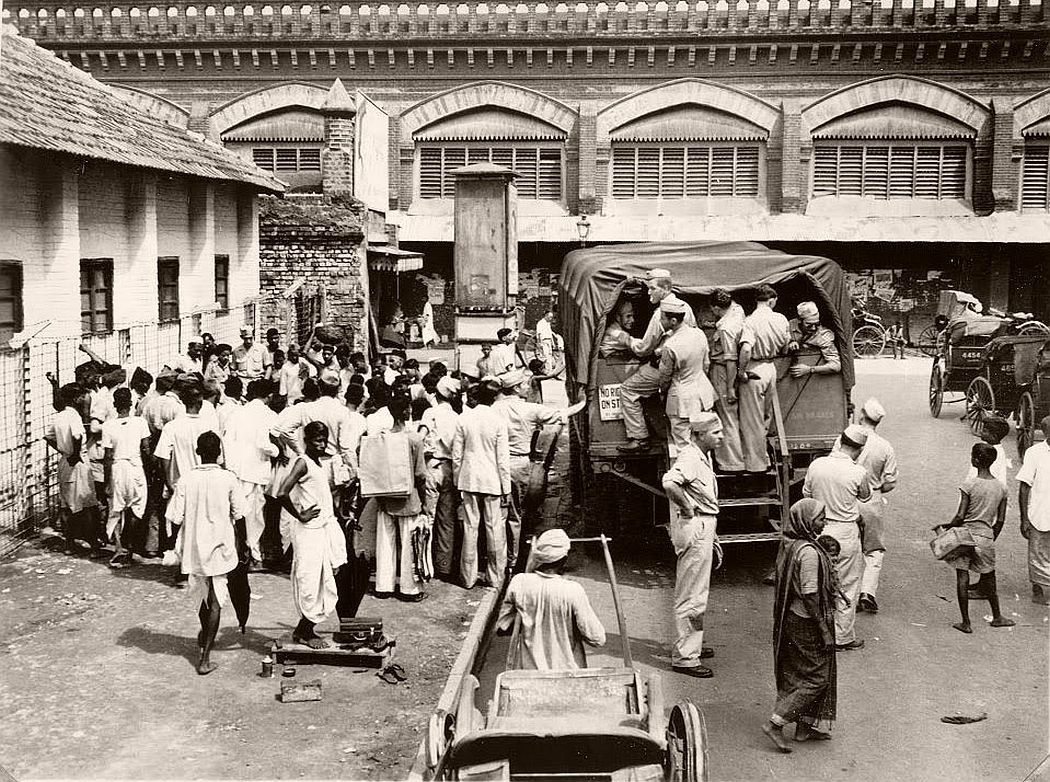
Crowd gathers round a sidewalk performer at bus stop while GI’s take temporary advantage of an overhead view from steps of a camp bus. This is a good spost for hawkers, beggars, shoe shine boys, showmen to work on the bankroll of the ‘rich American soldier’.
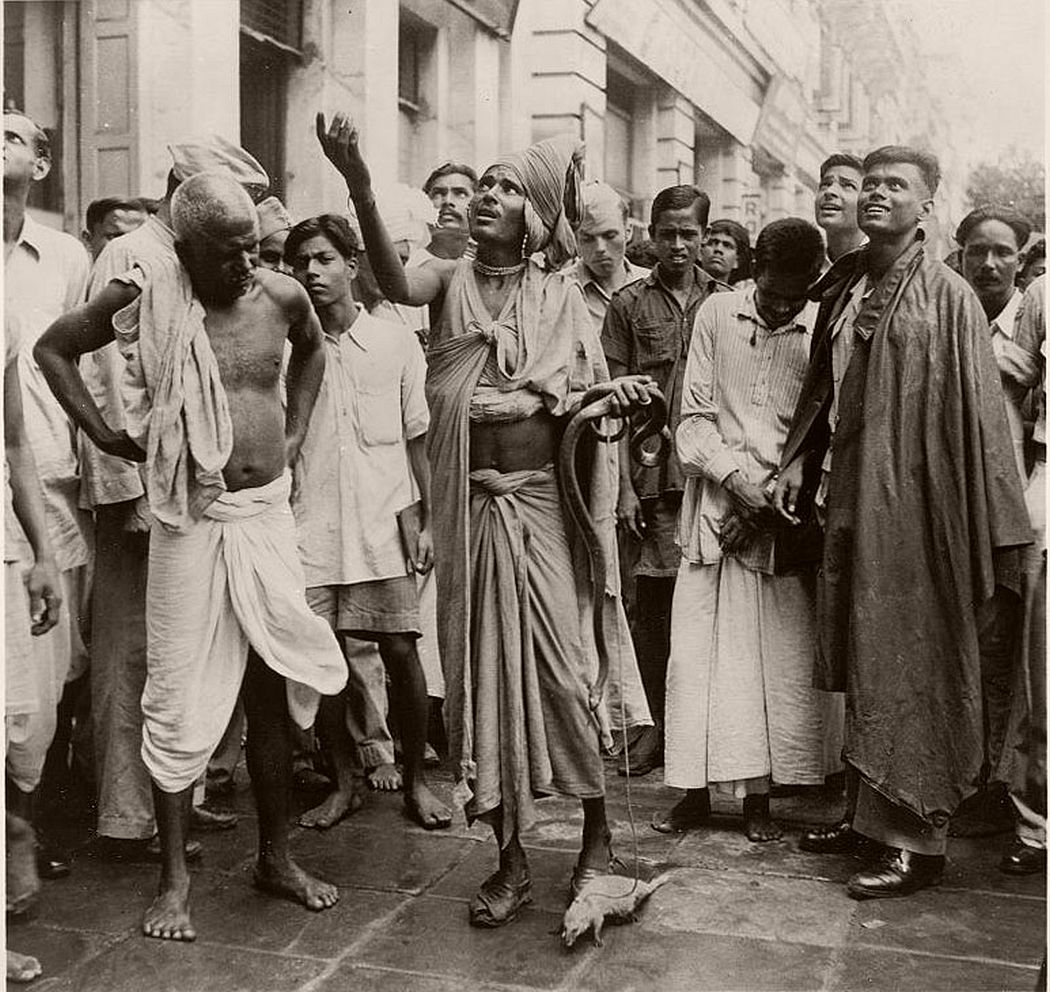
This weird-looking snake charmer is doing his best to coax a balcony audience to toss down enough baksheesh to get his cobra nad mongoose in the mood to stage a fight to the finish. Actually the combatants always seem a bit bored with the act and after a few fierce snorts and lunges, decide it is better to live.
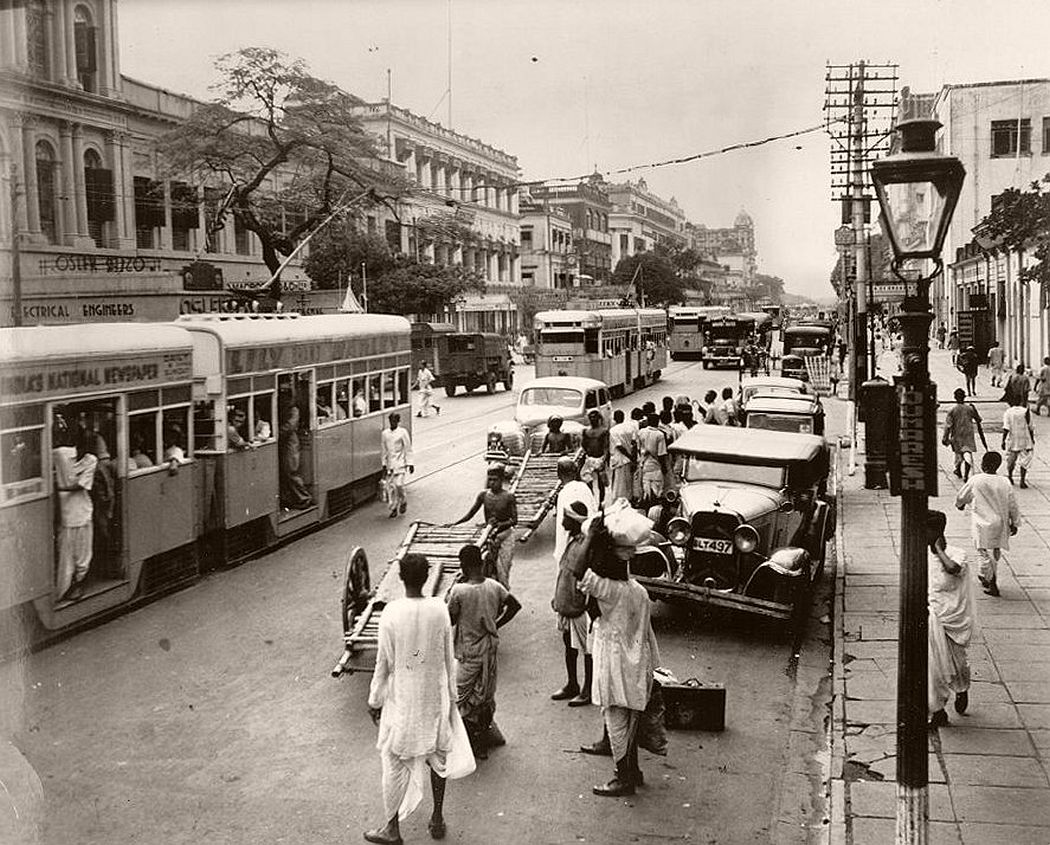
Calcutta’s traffic is usually snarled. And the reasons are clearly shown. Shuffling coolies and padestrians with little regard for their lives seem completely oblivious to the perils of automitive traffic.

Chowringhee Square. The Mohammddan mosque, Juma Masjid, is shown at left. This is actually one of the quiet moments when GI trucks, taxis, bicycles and other modes of transport can move with comparative freedom.
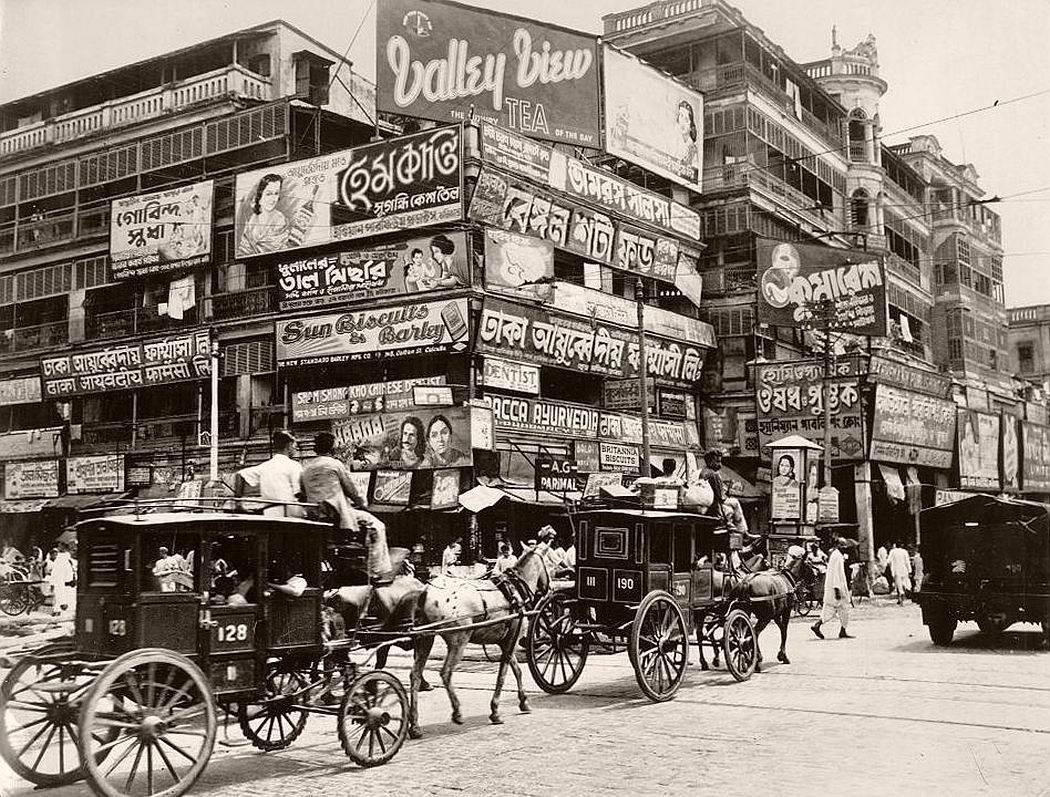
A bewildering mass of billboards at the corner of Harrison Street (Burra Bazar) and Strand Road. One of the oldest sections of Calcutta, at the foot of Howrah Bridge, it is a fine vantage point for photographing the passing parade of oddly dressed natives and curious vehicles.

Chowringhee Street, Calcutta’s main throughfare, an amazing parade of fascinating sights and sounds.Every soldier who has trod its length retains memories of one of the most colorful and interesting streets in the world.
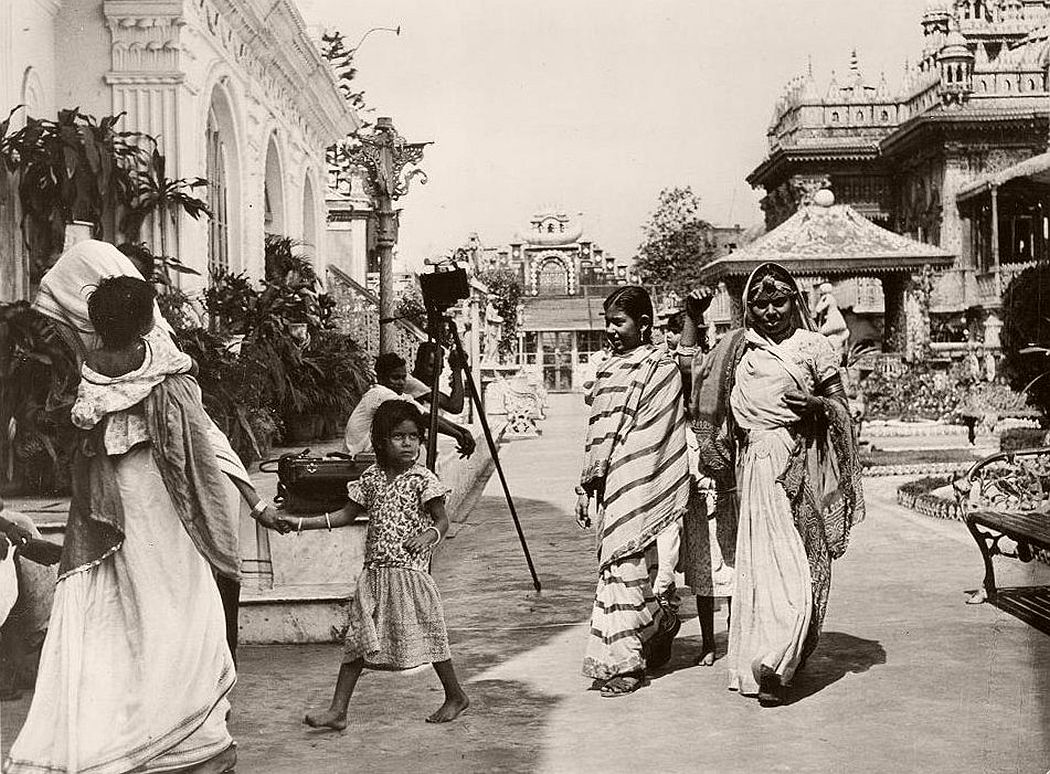
Indian women, dressed in the native Saree, return from prayer at Jain Temple. Little girls wear European dress usually until the marriage age, although some mothers like to dress the little girls in Sarees.

